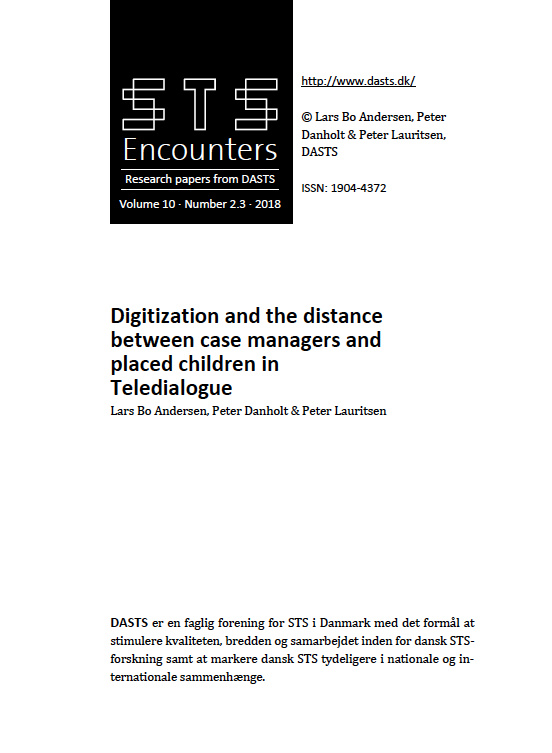Digitization and the distance between case managers and placed children in Teledialogue
DOI:
https://doi.org/10.7146/stse.v10i2.135242Abstract
Public digitization raises concerns that the distance between social workers and citizens will increase. Concerns which are particular prominent when digital technologies are introduced directly into the communication between social workers and citizens. On this background, this article investigates two questions: What exactly constitutes being 'close' or being 'distant' in the specific practices and situations of case managers interacting with placed children. And how are these forms of distance or closeness affected when case managers and children start to communicate through video conferencing, chat and texting. With an outset in Actor-Network Theory and experiences from a research project called Teledialogue, the article illustrates how the practice of case management operates through complex combinations of being close while maintaining distance. Combinations that were transformed by the digital technologies introduced with Teledialogue. Amongst others, it is argued that the distance entailed by video conferencing created comfort for children while allowing case managers to scrutinize facial expressions. It is also argued that in some cases, digital technologies paradoxically helped to build trust by breaking down and being difficult to use. The conclusion being that the consequences of digitization is not simply a matter of either/or between closeness and distance, but rather that digitization for better or worse transforms the ways in which distance and closeness are already present in the specific situations and practices of social work.

Downloads
Published
How to Cite
Issue
Section
License

This work is licensed under a Creative Commons Attribution-NonCommercial-ShareAlike 4.0 International License.
Starting with volume 15, articles published in STS Encounters are licensed under Attribution-NonCommercial-ShareAlike 4.0 International (CC BY-NC-SA 4.0). The editorial board may accept other Creative Commons licenses for individual articles, if required by funding bodies e.g. the European Research Council. Previous articles are not licensed under Creative Commons. In these volumes, all rights are reserved to the authors of the articles respectively.




